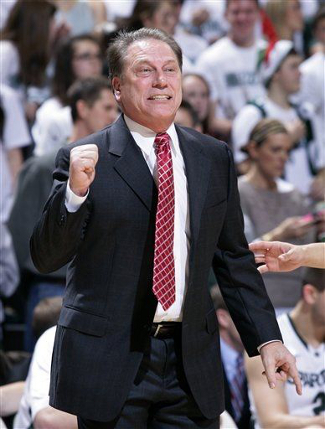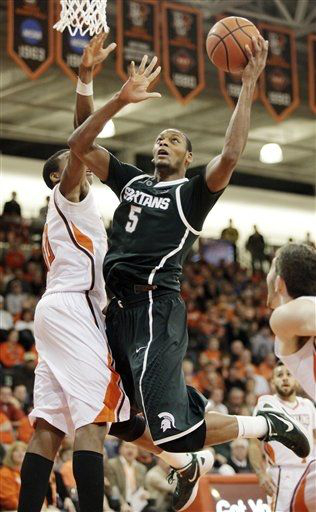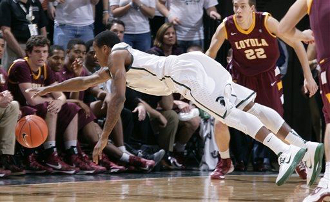Texas Longhorns (7-4) at #20/19 Michigan State Spartans (10-2)
Breslin Center | East Lansing, MI | Tip: 1 P.M. CT | TV: ESPN2
LRT Consecutive Game #232
The Texas Longhorns square off with Michigan State this afternoon in East Lansing, wrapping up one of the toughest weeks of the season, both on and off the court. On Wednesday night, Texas pulled off its biggest win of the season, knocking off a ranked North Carolina squad. As the final minutes of the victory ticked away, a Yahoo! report quickly spread through the sports world, breaking the news of a season-long suspension for sophomore point guard Myck Kabongo.
As it turns out, the suspension had been handed down five days prior, on December 14th, and the Texas program was already in the process of appealing the decision. Last night, after the team had already landed in Michigan without their point guard, that suspension was reduced to 23 games. With 11 games having already been served, Kabongo will be available for the final eight regular season games and post-season play.

Tom Izzo will challenge for another Big 10 title
(Photo credit: Al Goldis/Associated Press) 
Keith Appling runs the show for Michigan State
(Photo credit: Al Goldis/Associated Press) 
Adreian Payne is thriving in his new role as sixth man
(Photo credit: J.D. Pooley/Associated Press) 
The Spartans have struggled with turnovers this year
(Photo credit: Al Goldis/Associated Press) |












